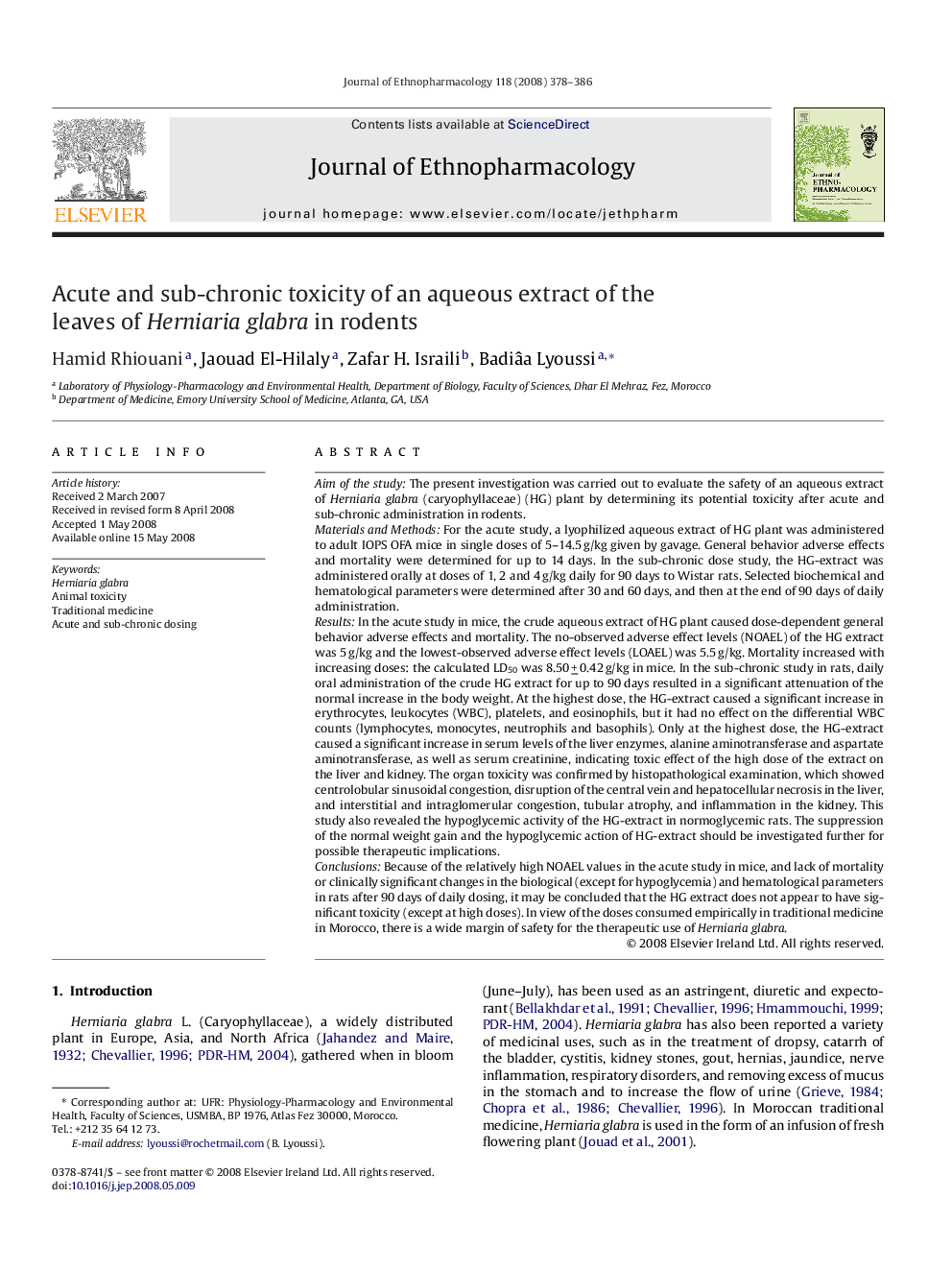| کد مقاله | کد نشریه | سال انتشار | مقاله انگلیسی | نسخه تمام متن |
|---|---|---|---|---|
| 2546760 | 1124035 | 2008 | 9 صفحه PDF | دانلود رایگان |

Aim of the studyThe present investigation was carried out to evaluate the safety of an aqueous extract of Herniaria glabra (caryophyllaceae) (HG) plant by determining its potential toxicity after acute and sub-chronic administration in rodents.Materials and MethodsFor the acute study, a lyophilized aqueous extract of HG plant was administered to adult IOPS OFA mice in single doses of 5–14.5 g/kg given by gavage. General behavior adverse effects and mortality were determined for up to 14 days. In the sub-chronic dose study, the HG-extract was administered orally at doses of 1, 2 and 4 g/kg daily for 90 days to Wistar rats. Selected biochemical and hematological parameters were determined after 30 and 60 days, and then at the end of 90 days of daily administration.ResultsIn the acute study in mice, the crude aqueous extract of HG plant caused dose-dependent general behavior adverse effects and mortality. The no-observed adverse effect levels (NOAEL) of the HG extract was 5 g/kg and the lowest-observed adverse effect levels (LOAEL) was 5.5 g/kg. Mortality increased with increasing doses: the calculated LD50 was 8.50 + 0.42 g/kg in mice. In the sub-chronic study in rats, daily oral administration of the crude HG extract for up to 90 days resulted in a significant attenuation of the normal increase in the body weight. At the highest dose, the HG-extract caused a significant increase in erythrocytes, leukocytes (WBC), platelets, and eosinophils, but it had no effect on the differential WBC counts (lymphocytes, monocytes, neutrophils and basophils). Only at the highest dose, the HG-extract caused a significant increase in serum levels of the liver enzymes, alanine aminotransferase and aspartate aminotransferase, as well as serum creatinine, indicating toxic effect of the high dose of the extract on the liver and kidney. The organ toxicity was confirmed by histopathological examination, which showed centrolobular sinusoidal congestion, disruption of the central vein and hepatocellular necrosis in the liver, and interstitial and intraglomerular congestion, tubular atrophy, and inflammation in the kidney. This study also revealed the hypoglycemic activity of the HG-extract in normoglycemic rats. The suppression of the normal weight gain and the hypoglycemic action of HG-extract should be investigated further for possible therapeutic implications.ConclusionsBecause of the relatively high NOAEL values in the acute study in mice, and lack of mortality or clinically significant changes in the biological (except for hypoglycemia) and hematological parameters in rats after 90 days of daily dosing, it may be concluded that the HG extract does not appear to have significant toxicity (except at high doses). In view of the doses consumed empirically in traditional medicine in Morocco, there is a wide margin of safety for the therapeutic use of Herniaria glabra.
Journal: Journal of Ethnopharmacology - Volume 118, Issue 3, 13 August 2008, Pages 378–386